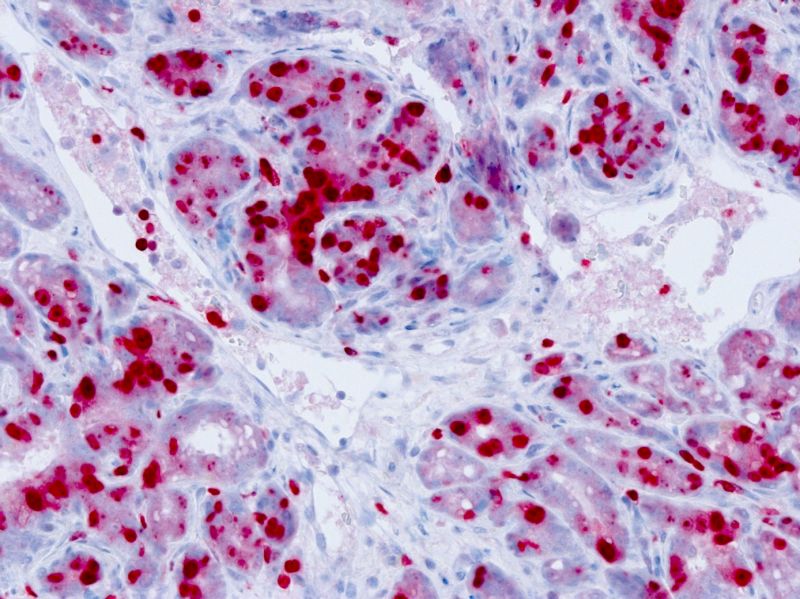31/05/2016
Print PageDKTK Essen/Düsseldorf: New treatment resistance mechanism in malignant melanoma

Every year more than 20,000 people in Germany are diagnosed with malignant melanoma. And the figures are rising. It is estimated that 3500 of these patients die each year from the cancer, which can affect people of any age. Since 2012, Germany has been using targeted therapy to treat advanced malignant melanoma. This succeeds in reducing the tumour in around 70 per cent of patients treated. However, after a year, the disease starts progressing again in half of these patients. The study investigated why there is such a variation in the duration of response, taking into account a new aspect.
The researchers report that soluble factor sFRP2 increases the aggressiveness of the melanoma. sFRP2 is produced by connective tissue cells (fibroblasts) in the environment surrounding the tumour cells. Interestingly, older fibroblasts release higher levels of sFRP2 than younger cells. These mechanisms were studied in greater detail in cell culture experiments and in a mouse model. It was found that sFRP2 causes an increase in reactive oxygen species, which cause additional DNA damage in the tumour cells, thereby leading to genetic instability. So to what extent does sFRP2 affect therapy? In older mice, targeted melanoma therapy is less effective than in younger mice. This was confirmed in a large patient population: the younger the patients were when they started treatment, the more the tumour was reduced.
“Our observation once again illustrates the fact that the interaction of tumours with their environment plays a vital role in tumour formation and influences the effectiveness of therapy,” explains Dr Bastian Schilling, one of the study authors. The new findings emphasise the fact that demographic characteristics also play a role. “However, these results will not mean that we refuse targeted melanoma therapy to older patients,” adds Professor Dirk Schadendorf, who coordinates the cancer immunotherapy research programme within the German Cancer Consortium. The aim of the programme is to develop new therapy approaches that can guide the immune system to target tumours.
Original Publication:
Kaur, A. et. al.: sFRP2 in the aged microenvironment drives melanoma metastasis and therapy resistance. In: Nature (04. April 2016), DOI: 10.1038/nature17392